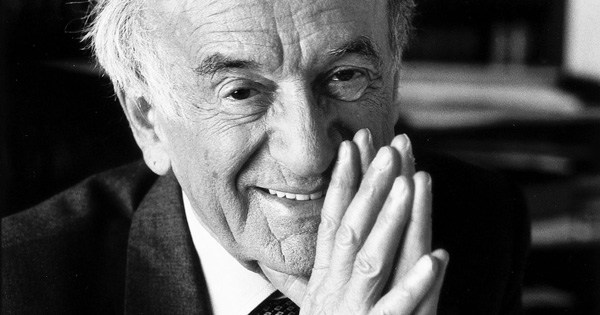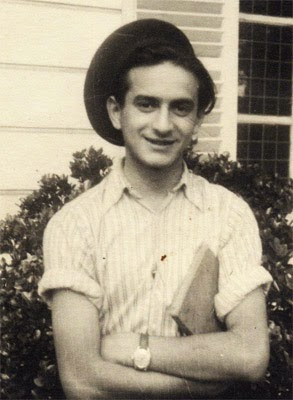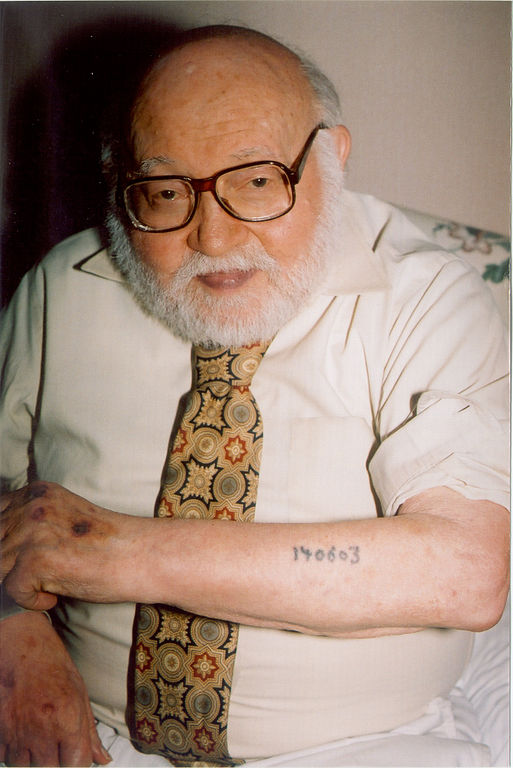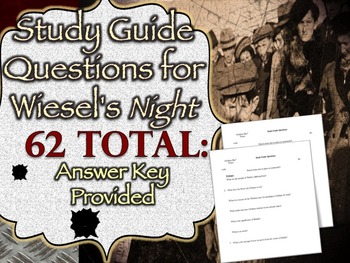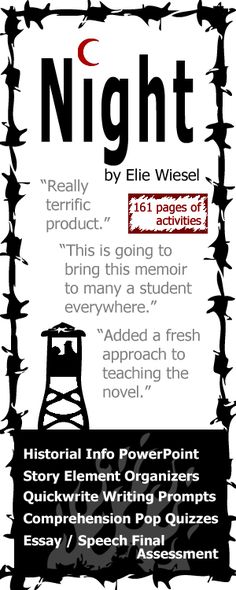Blog
Three must-read articles to give you the expertise you need on Elie Wiesel’s Big Con
Written on December 6, 2015 at 8:44 pm, by Carolyn
By Carolyn Yeager
Here they are! These three articles, read in order, will explain why Elie Wiesel was not at Auschwitz or Buchenwald. If you carefully read and comprehend what is in these three articles, you will understand why this site is called Elie Wiesel Cons The World and you will be able to explain it to other people in a way that they are unable to refute. Do you see any real refutation (with sourced material) brought by visitors to this site? If you do, please let me know because I missed it. The three articles are:
1. When did Elie Wiesel arrive at Auschwitz ? Could he have received the number A-7713? This article proves that the answer to the second question is “no” … which makes everything else fraudulent and impossible.
2. Gigantic Fraud Carried Out for Wiesel Nobel Prize This article points out that the main evidence for Wiesel to have been incarcerated at Buchenwald is a famous photograph he purports to be in, which was used to win him a Nobel Prize. But the person identified as Wiesel is shown conclusively NOT to be Wiesel.
3. “Elie Wiesel was Not in Buchenwald” Made Simple Here, every piece of “evidence” used to place Wiesel in Buchenwald from the end of January to April 1945 is examined and shown not to apply.
If, after reading these three articles, you still believe in the legend of Elie Wiesel, please write to me and tell me why because to my mind they pretty much destroy it. One of the staunch upholders of the Wiesel-Buchenwald tale was Jewish Prof. Kenneth Waltzer. He tried to refute what this website was saying, only to be knocked down and out for the count. He is now retired from Michigan State University, where he had his special Elie Wiesel projects going, and is only loosely associated with a film titled Kinderblock 66: Return to Buchenwald in an historical advisory role. Wiesel’s role is similarly reduced to five words between parentheses – “(including among them Elie Wiesel)” – while other names dominate the film.
So what is the Wiesel Legend running on these days? In my opinion, the most important ingredient is that the mass public wants to believe it. They like the story of incredible suffering of a persecuted people. They like the man who has been put into the center of the story, the man who survived against all odds and “turned the tables,” so to speak. They don’t know that Wiesel privately laughs at them for their gullibility. Family members have let on to that in the past, but their words have been scrubbed away. Elie Wiesel is putting us on and the majority of us fall for it! He even admits he makes things up … but he excuses it this way:
In [my] book “One Generation After” there is a sentence which perhaps explains my idea: “Certain events happen, but they are not true. Others, on the other hand, are, but they never happen.” So! I undergo certain events and, starting from my experience, I describe incidents which may or may not have happened, but which are true. I do believe that it is very important that there be witnesses always and everywhere.
In other words, he is a false witness, but a witness nevertheless. He sees nothing wrong with that because the over-all “Holocaust” story is important for Jews and Israel, and relies on witnesses. There can never be too many witnesses, no matter if they were actually there or not. Even if what he “witnessed” did not actually happen, it is true (in his mind) because the conditions (he thinks) were such that it could have happened. Got that? Elie Wiesel is just the most famous false witness, but multiply him with thousands of others and you have … “The Holocaust”.
So our job, the few enlightened ones, is to get the mass public to pay attention, and to force this information into the mass media. You could start by circulating the three articles above, and selecting them on search pages enough times to get them to the top of the page. Elie Wiesel Cons The World is quite competitive as far as visitors go, in spite of the ridiculously low and inaccurate rating given it by Alexa. It is popular because many young people and students search the subject regularly. Our job is also to have all our facts straight and not be stuck in the low aspiration of only wanting to show that Wiesel exaggerates or lies about what he saw in the camps. If he was in the camps, he will receive sympathy no matter how many lies he tells. But if he wasn’t there – that is the shocker and changes the whole dialogue. And from all the evidence, he wasn’t.
Let’s be courageous and go where the evidence takes us. To be a top-notch ambassador for truth and freedom from political lies, you should also try to read and study these important articles:
Night #1 and Night #2 – What Changes were Made and Why, Part One and Part Two
Both contain original translations from the Yiddish forerunner of La Nuit and Night to reveal the what and the why of the changes that were made by Marion Wiesel in the new 2006 edition.
Elie Wiesel was unknown to Mel Mermelstein in the Buchenwald Camp A famous survivor of Buchenwald who lived in the “children’s block” didn’t mention Elie Wiesel in his 1979 book.
Signatures prove Lázár Wiesel is not Elie Wiesel The signature on the back of the Buchenwald “release” questionaire had been overlooked until I noticed it was unlike Wiesel’s known signature.
Questions on Elie Wiesel and the Sorbonne Great examples of how Wiesel invents his past.
Elie Wiesel and the Mossad Part 2 Part 3 Part 4 Amazing story of Wiesel’s ties to the Irgun and Israel from his earliest days in France; his trips to Israel and his role as a translator and journalist during the German-Israel Reparations negotiations; his move to New York and involvement in bringing Soviet Jews to Israel. Concludes that Wiesel has always been an asset of the Mossad.
The Shadowy Origins of Night Part 2 Part 3 How the book Night came about and the impossibility of it happening the way Wiesel says.
You will find that the common thread in these 9 articles is to reinforce my original statement. This is very powerful. You can put it together for yourself in your own way, but I will try to summarize my findings even more clearly in a future article.
Show us a tattoo, darn it!
Written on November 9, 2015 at 10:34 pm, by Carolyn
If Elie Wiesel’s supporters want us to believe he has A7713 tattooed on his left arm, THEN SHOW US THE TATTOO!
This is NOT a tattoo.
And I can prove it.
All we can see is a faintly darker area on an arm that looks like it could be a tattoo, and it is situated where an Auschwitz tattoo would be, but we can’t make out any definite shapes, let alone numbers. So how are we to tell? It is nothing but a tease.
If it were an Auschwitz tattoo, it might not be the number A7713. That would be a very good reason for Wiesel not to show it to the public – his entire story would be destroyed.
It’s also necessary to find the original photograph to discover if the gray mark is on the original – on the negative, say. At the USHMM website, I was shown only 3 pictures (all of which I have on this website) from my search of “Young Elie Wiesel,” and “Elie Wiesel in France.” Those three did not include this one. Why wouldn’t the USHMM, that owes it’s founding to Wiesel, want to have this picture in its collection? It cannot easily be found at Yad Vashem or the Auschwitz Museum websites, either. Why is Loupi Smith the only person who has come up with this controversial image?
I think this picture was taken in the summer of 1945, in France, since it matches another photo of young Wiesel identified by the USHMM as taken in France in 1945. If Wiesel just arrived from Buchenwald as a scrawny, starved, traumatized kid whose head was shaved clean only a few months before, as we see in the Barracks picture taken in April 1945 that he claimed in 1983 to be himself, then this photo of a healthy, well-fed, smiling boy with long hair doesn’t fit the EW narrative, does it? Is this why no one wants this picture to be circulated? I think that’s a very good explanation. Heidi, take note.
There is no official archive of photos of Elie Wiesel that documents his life. Why not? I think it’s because Elie can’t be pinned down – his story is fluid. Even details in his book Night, first published in 1960, were revised by his wife in 2006! As with this picture, some photos of Wiesel contradict the story he is telling, as well as some things he said in the past contradict what he is saying now — and even what he said then. That is why everything to do with Elie Wiesel is in such disarray. And that is why he will never answer questions except in a “pretend-mode” with friendly Jews who are willing to accept whatever he says, no questions asked.
This IS a tattoo.
And this is the way pictures of Auschwitz-Birkenau survivors should be taken, with a face connected to the arm. With real tattoos, even when faded, they are recognizable as numbers.
And consider that this man, Sam Rosenzweig, appears to be the real deal, is quite old and yet his tattoo is easy to read. Yet Wiesel in the photo above is only a little over a year from the time he ostensibly received his tattoo, and what we see is very faint and unreadable.
Now here is a sure-fire way to prove it to yourself. To enlarge this page without losing sharpness, hold down the Ctrl key on the lower left of your keyboard and hit the plus (+) key on the upper right (next to Backspace; do not bother with Shift) several times until the page enlarges to where it won’t enlarge anymore (seven enlargements for me). Now you can see what these magnified “tattoos” on Wiesel are made of – a shadow or skin discoloration, or maybe a little dishonest smudging, either on the photo or on the arm. But it’s clear there are no distinct numbers. Just hit Ctrl and the minus (-) key to go back to your normal page resolution.
This is NOT a tattoo.
When enlarged in the way that I recommended above, it is perfectly clear that it is not. It also doesn’t go straight across on his arm like on the top picture. but goes downward just a bit.
So please don’t rush to accept suggestive images as proof of anything, without some further search. In other words, don’t be an easy mark, a gullible non-thinker. If you have an interest, for whatever reason, in pushing the holocaust story, then, sure, you will grab onto anything that comes along … like these photographs. And no questions asked. That’s what Elie Wiesel buffs love – they love people who don’t ask questions.
Unrealistic Expectations from a Reader
Written on November 6, 2015 at 12:00 pm, by Carolyn
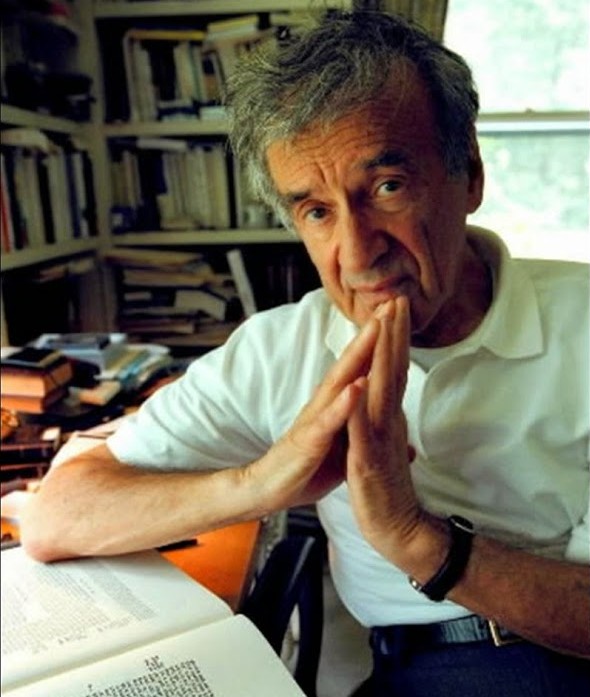
Image uploaded by Loupi Smith to convince people that Elie Wiesel has a tattoo on his left arm. But why is the picture cropped on the right?
I received a letter from “Heidi” and I was a little uncertain whether it was real or not. I have now decided that, unfortunately, it’s for real. But oh my, then we have another instance of a racial brethren who has fallen under the spell of the Elie Wiesel “Con.” Wiesel has an industry behind him that assures massive support for “his story” … or his version of history.
In all her good-hearted but overdone and misdirected sympathy for the sufferers of the world, Heidi becomes nothing more than a brainwashed tool, who is fooling no one but herself.
I wrote back calling her a “brainwashed Canadian,” which she took as an insult, mainly because to her way of thinking it separated us as Canadian and American – different – when in reality we have common ancestors. She may think that is bad, but it’s really much worse. Here is her letter to me; my commentary follows. And I would like to hear comments from the readers too. What do you think?
3 November 2015
Hi Carolyn,
I’m reading Wiesel’s book, Night, for the 2nd time, in French. I have never read it in English, as there were no English copies available at my library. I strongly encourage you to interview Wiesel about the questions you have. I believe he would be more than willing to be interviewed—I just can’t see him turning it down, unless if you were to attack or accuse him, I suppose…that would make anyone feel uncomfortable, you know? After all, he is human, and so are you, so I just don’t see how it couldn’t work. I would be curious to know what he had meant by the “silent/mute blue” he saw in the fire. To be honest, I was quite refreshed by his book that it’s the first time Nazis/SS are differentiated from the German people (I’ve read the comic book, Maus, by Art S, which never attacks Germans either) I think it would be important to ask him why he doesn’t hate Germans. I’m sure he’d be able to explain that question—I have my guesses, but I don’t know the real reason. I have a feeling he’d show you his left arm, if you were to ask him; I looked it up—apparently, it’s there—just faded: (now, you maybe won’t like me! :P )
https://plus.google.com/u/0/111151465916941421669/posts/ihdownSArMG?pid=…
I think that a major issue is that the world didn’t know just how bad things were in Germany after WW1. Things just got worse and worse. The poverty was very bad and traumatizing—a lot of men were killed as soldiers, often leaving behind poor widows with a ton of kids to feed. Certain German children did a lot of child labour, picking potatoes in their bare feet, just to eat. Unfortunately, there was no social aide, so anxiety and fear became a way of life for a lot of people. Of course, I wasn’t there, but I would never have wanted to be, as things just got worse and worse. Nonetheless, not all German kids were poverty-stricken if they were lucky enough to have been born into wealth. The problem was to actually find a job, with the economy being so bad. Good jobs simply couldn’t be found…
I think it’s worth a try to contact Wiesel.
Sincerely,
Heidi (last name withheld, but it’s German)
First, Elie Wiesel is 87. He hasn’t made a public appearance for a couple of years. Is our Heidi aware of that? Probably not.
Even when much younger, Wiesel only allowed interviews when very strict ground rules about what can be asked, and what not, were laid down in advance. It is rare, if not never, that he allows any interviewer, Jew or not, to ask him any non-softball questions. Is Heidi aware of that ? Probably not.
On this website, I have already attacked and accused Wiesel of many things, mainly pointing out the many lies he has told. He has made no attempt to answer any of it. Has Heidi read most of what is on this website? Surely not. She has read the sidebar with the Wiesel Quotes, and the title. She wants Wiesel to explain what he meant by the “silent, blue sky” at night – she’s sure he can. But Heidi, Wiesel didn’t write that he saw the blue sky in the fire, as you say, but that the fire was burning under the silent blue sky … at night. Please keep things straight — one thing I can’t tolerate is sloppiness when talking about Wiesel.
Heidi compares the Jewish book “Night” to the Jewish comic book, “Maus,” by Art Spiegelman, and admires them both because they “differentiate the SS/Nazis from the German people,” she thinks. But they don’t. Elie Wiesel has famously written, “”Every Jew, somewhere in his being, should set apart a zone of hate — healthy, virile hate — for what the German personifies and for what persists in the German. To do otherwise would be a betrayal of the dead.” He also thinks it is perfectly proper and even necessary for ordinary Germans, 70 years after the war ended, to continue to supply “survivors” and Israel with billions more euros … money these innocent Germans are taxed for. But Heidi doesn’t stop to think things through. If she would read more of Wiesel’s writings than just “Night,” she would learn far more about the real nature of the man. If she would read everything on this website, she would really learn about him.
Wiesel has also said that he will never knowingly be in the same room with a holocaust denier! He wants nothing at all to do with them. I am not only all German, but a holocaust denier. So how would he give me an interview?
Heidi makes a distinction between German and Nazi, but I do not. She will say, “Oh, no, not anti-German, but anti-Nazi.” In a second letter that I received from her she told me about her grandmother’s life in Germany right after the war and said of her family, “They weren’t Nazis.” I say, too bad, what were they then?
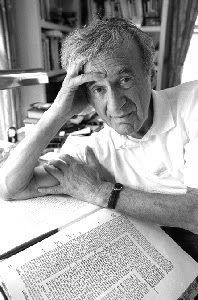
Same setting as feature photo – here we see more of his arm, but when enlarged it is nothing but a shadow.
About Wiesel’s left arm, she sends me to the page put up by Loupi Smith, a notorious Jew who probably photoshopped the b/w picture of the young Wiesel (right). If you zoom in on it, nothing that looks anything like numbers shows up. And where was it taken? We have seen plenty of unretouched pictures of Wiesel’s arm where nothing is visible. As to the color photo of the older Wiesel (above) – I have for some time had this small b/w version (above left)* that shows more of his arm, and the darker smudge turns out to be nothing but a shadow. Absolutely – it is not a number. To prove Wiesel has a tattoo, Loupi has to do better than this. And so does Heidi. For instance, a quality magnified view that shows A7713, not just a smudge. Maybe a bit of cooperation from the tattooed person himself would help. Because all the evidence points to the fact that he took another man’s number for his own after the war. The evidence of his handwriting is also conclusive.
[*These two photos also show that a professional photographer was at work — these are not just casual shots of Elie reading in his office! They are staged.]
The world today (at least anyone who has any interest in it) does know how bad things were in Germany after WWI. That information has been widely disseminated. Most people have sympathy for the Germans of that time. But Heidi wants to equate the suffering of the Germans after WWI with the suffering of the Jews during WWII. Jews, however, and Elie Wiesel in particular, will never go along with that! Why doesn’t Heidi have anything to say about the even worse suffering of the Germans after WWII?
Heidi got even more carried away in her second letter:
My grandmother suffered terribly from the poverty in Germany after the 1st war—she was only a year old when her father died as a soldier in 1914, and her mother was left with many children to take of, all on her own, as NO social assistance was available at that time. My Oma had no shoes. She picked potatoes in her bare feet for Jews. You could never possibly understand such suffering, could you? Where were you during that time?
Where was I? Just like Heidi, I wasn’t yet born! How old does she think I am?
I advised Heidi to write to Elie herself and get her own interview — if she thinks it is possible that such a request would even get to him. She answered that she did intend to write to him at his Foundation, a kind of a fan letter, but she didn’t expect to receive a reply. She said:
My only intent would be to express the empathy I feel for all that he suffered. We are all humans, are we not? I believe that he wrote the book while experiencing dreadful pain of those horrible memories, done by war criminals, not the common German citizen of that time. He is very intelligent and well-educated—a special person to me, as he understands human suffering on a very deep level.
Heidi, in her high-mindedness is deeply ignorant. In the photo above right, probably taken in 1946, Wiesel looks mighty healthy and confident. He did not suffer; he made other people suffer. Those who ran the concentration camps were not “war criminals” and were not different from the common German citizens’ like her family, who she pointed out were “not Nazis.” And Wiesel was not well-educated – he was barely educated, except by an odd assortment of rabbis. His doctorate is “honorary.” So she strikes out all the way around. Our Heidi is just another brainwashed German who bows down to kiss the feet of the Jews, thinking that it will be appreciated and everything will be made right thereby. After all, we’re all humans, aren’t we? ~~
Book suggestions to take the place of “Night” in the classroom
Written on July 8, 2015 at 10:36 am, by Carolyn
In the previous article posted here, a father tells of his effort to have Night by Elie Wiesel removed as required reading in the advanced Freshman English course at the school his children attend. He has suggested Alexander Solzhenitsyn’s writings as a good substitute, since the teacher of the course has said she wanted a story of someone interned in a prison camp.
Why a story of someone in a prison camp? For freshman (9th grade) students? When I was in school at this level, we were not assigned reading about prison camps. Of course, Elie Wiesel was unknown at that time. But this tells us that the reason for assigning Night to fourteen year olds in just about every school in the USA, Europe, Canada, Australia, and elsewhere all over the world, has nothing to do with the importance for adolescents to read stories about life in a prison camp, but only to do with Elie Wiesel being promoted and sustained by the “powers that be” to the unquestioned status of “Holocaust High Priest.”
The dawning understanding that High Priest Wiesel is a con-man whose story Night is a purely fictional account that he took from a book published in Yiddish in 1955 is causing people like our father to object to Wiesel’s false narrative being forced upon their children in a setting in which criticism of the book is not allowed, but respect for the authorities behind it is demanded. Since the teacher has justified her choice of Night by saying she wants her students to read about someone in a prison camp, I asked the readers of Elie Wiesel Cons The World to come up with some suggestions. And they did! Here is the list so far:
One Day in the Life of Ivan Denisovich by Alexander Solzhenitsyn (1962) Also see here
Boer Boy by Chris Schoeman (2011) About the British internment of Boers during the 2nd Anglo-Boar War.
Looking Like the Enemy: My Story of Imprisonment in Japanese-American Internment Camps by Mary Matsuda Gruenewald (2005)
Dancing Along the Deadline: The Andersonville Memoir of a Prisoner of the Confederacy by Ezra Hoyt Ripple (1996)
Boy 30529: A Memoir by Felix Weinberg (2014)
Left to Tell: Discovering God Amidst the Rwandan Holocaust by Immaculee Ilibagiza (2007) Comment: It was on my neighbor’s son’s summer reading list. He loved it, and he is going into 10th grade.
Three Came Home by Agnes Keith (1947) An excellent, truthful and thoughtful autobiography of Keith?s internment in Japanese Army prison camps located in Borneo, 1942-1945.
In my opinion, the best choice is Alexander Solzhenitsyn. The book is approximately 168 pages and is definitely a classic. Next choice would be Boy 30529, which is 192 pages, or Looking Like the Enemy, also 192 pages. I like Boer Boy, but it’s too long and more expensive. Night is only 120 pages, which is one reason for its popularity.
Letter from a fighting father
Written on June 6, 2015 at 9:42 am, by Carolyn
Dear Carolyn,
Since learning of you a few years ago I have learned a great deal.
Your work has been very instrumental in helping me to work on getting “Night” removed from the Freshman reading list in A.P. [advanced placement] English and Literature courses taught at the private high school where 3 of my 5 children are enrolled.
It has been a tough battle because in the midst of all that I was doing there was an administrative shake up due in part to one of the girls on the volleyball team being bullied.
Anyway, I have not let up in my pursuit of this mission. The original excuse given to me was that the teacher wanted a story about someone interned in a prison camp.* With so many great books why pick NIGHT? She could never give me a satisfactory answer. Not to cause a person to dig their heels in due to pride, I very delicately approached this issue from many avenues. BUT what has helped the MOST is your well documented articles on Elie Wiesel’s fraud. Of all the means available this has had the best response!!
There will be a meeting sometime this Summer. Do you have suggestions as to an alternate [book]? This is a Catholic school. I thought Alexander Solzhenitsyn would be good.
Anyway I’ve been very busy as of late and with some time today wanted to write and update you.
Best wishes always
Dr F.J. M____
* Strange the subject for a regular English and Literature course should be limited to a story line of a prison camp. That’s the first thing I would question with this teacher. But this is not unusual – it’s placed into the education objectives in so many districts because complete lesson plans have been pre-prepared by Jewish agencies for the book Night. The teacher is not required to know anything or even to read it. For this reason Night is the choice of almost all teachers. It’s a closed circle.
Alright readers, put some thought into this and send in your suggestions for an appropriate book for this father to suggest to his children’s school board.
One Day in the Life of Ivan Denisovich by Alexander Solzhenitsyn (1962), called a novella, is advanced but not too difficult for top high school students.
Crossing the Line by Paul Rassinier (1949), not as easy to get in English, is an account of the author’s experience in Buchenwald.
Do you know of a better one? Please send it in, and thanks.

